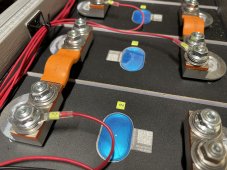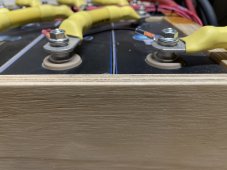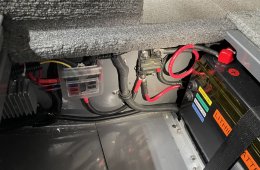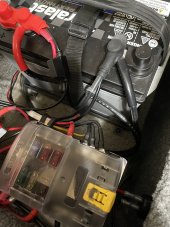SparkyGage
New Member
- Joined
- Oct 3, 2019
- Messages
- 106
Original Question (Dec '23):
I'm just curious if anyone else is using Dielectric Grease with LFP batteries? I'm a firm believer of using in automotive and farm applications, as well as marine, with LEAD batteries, but was wondering if there was any concerns or negative experiences with LFP? (I'm also believer of using Motorcraft XG-12 on electrical connections in outdoor machines)
The only thing that kept me from using DG this summer by default was the fact that I was disconnecting/reconnecting the battery all summer and new I'd be cleaning it regularly. I've now attached quick connects and had the instinct paint a film on the terminals, but thought I'd ask if anyone knows something about LFP if don't with DG.
Summary (Apr '24):
So here is what I have learned from the links in this discussion and further research into the products:
1) NO-OX-ID is a contact enhancer(?) that is designed to penetrate the layer of Aluminum Oxide that forms rapidly on any aluminum surface. It's best use case is BETWEEN contact points as the zinc crystals (their words, not mine) suspended in the gel pierce this layer if it has formed before the connection. With proper torque, the excess is squeezed out. As it is oxygen free, it could be used to coat the exterior of the connection to prevent corrosion.
2)Dielectric Grease (ie Silicone Grease) is also oxygen free and if applied AFTER proper cleaning AND torquing of the connection, will inhibit formation of Aluminum Oxide.
So the takeaway is: If you have, or can get NO-OX-ID, use it. If not, Dielectric Grease is an acceptable second choice for a properly cleaned and torqued connection and is almost always better than nothing in a harsh or exposed environment.
I'm just curious if anyone else is using Dielectric Grease with LFP batteries? I'm a firm believer of using in automotive and farm applications, as well as marine, with LEAD batteries, but was wondering if there was any concerns or negative experiences with LFP? (I'm also believer of using Motorcraft XG-12 on electrical connections in outdoor machines)
The only thing that kept me from using DG this summer by default was the fact that I was disconnecting/reconnecting the battery all summer and new I'd be cleaning it regularly. I've now attached quick connects and had the instinct paint a film on the terminals, but thought I'd ask if anyone knows something about LFP if don't with DG.
Summary (Apr '24):
So here is what I have learned from the links in this discussion and further research into the products:
1) NO-OX-ID is a contact enhancer(?) that is designed to penetrate the layer of Aluminum Oxide that forms rapidly on any aluminum surface. It's best use case is BETWEEN contact points as the zinc crystals (their words, not mine) suspended in the gel pierce this layer if it has formed before the connection. With proper torque, the excess is squeezed out. As it is oxygen free, it could be used to coat the exterior of the connection to prevent corrosion.
2)Dielectric Grease (ie Silicone Grease) is also oxygen free and if applied AFTER proper cleaning AND torquing of the connection, will inhibit formation of Aluminum Oxide.
So the takeaway is: If you have, or can get NO-OX-ID, use it. If not, Dielectric Grease is an acceptable second choice for a properly cleaned and torqued connection and is almost always better than nothing in a harsh or exposed environment.
Last edited:






